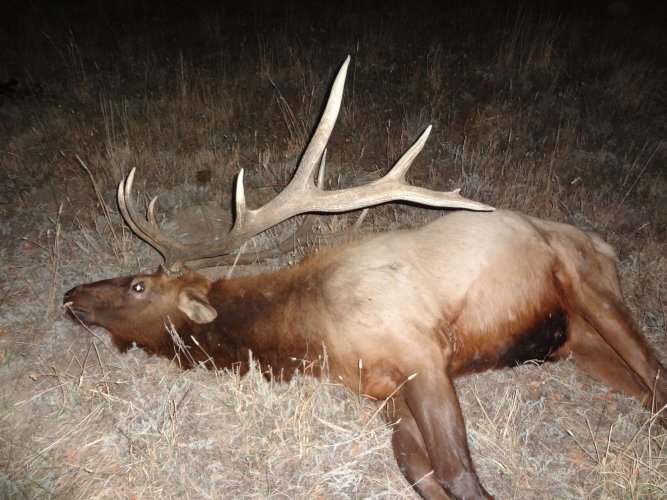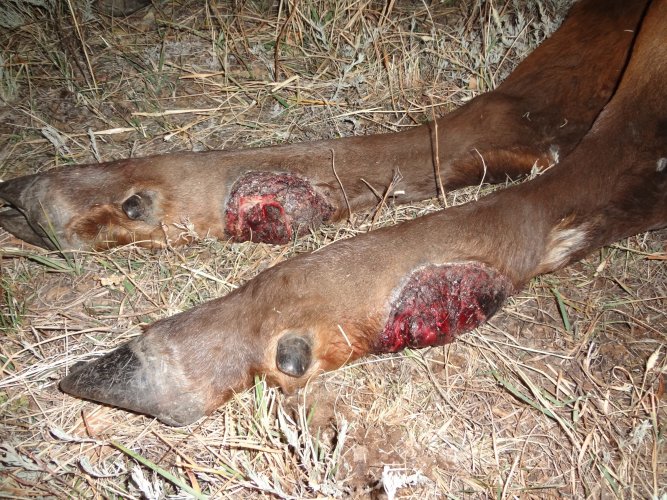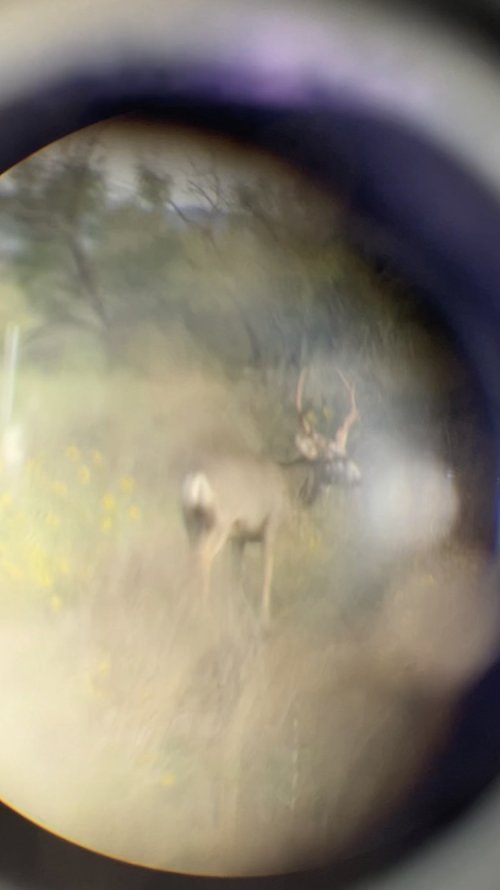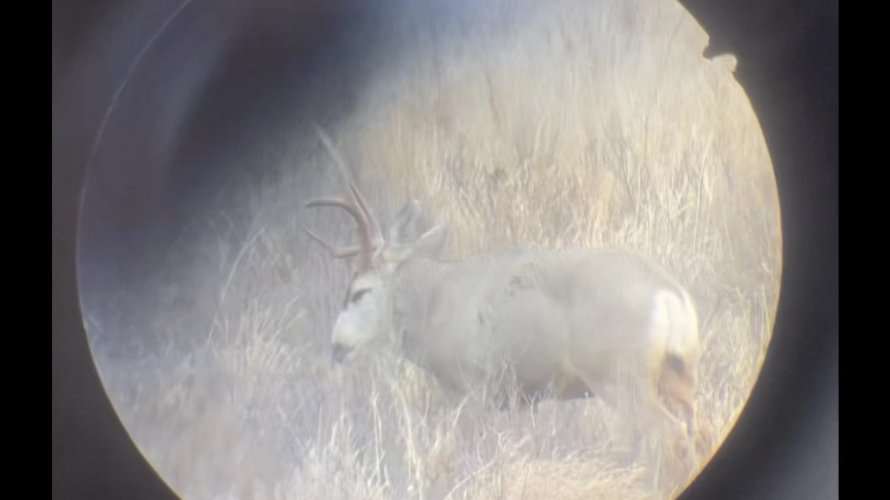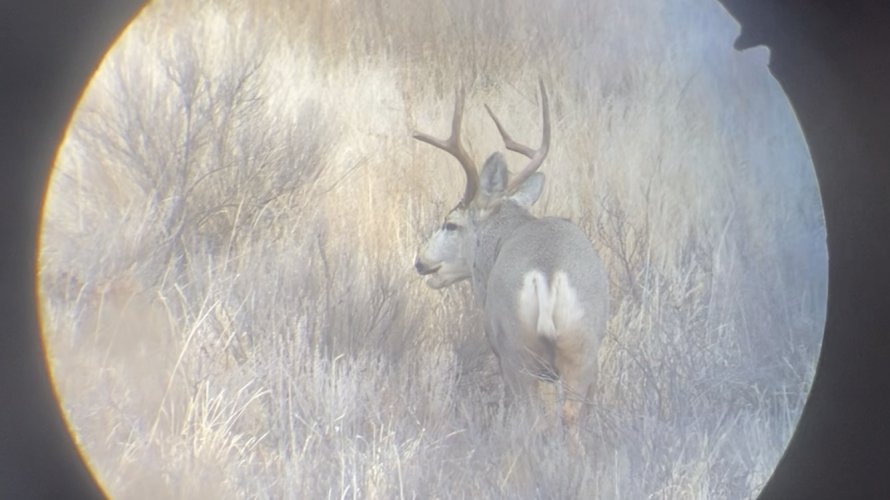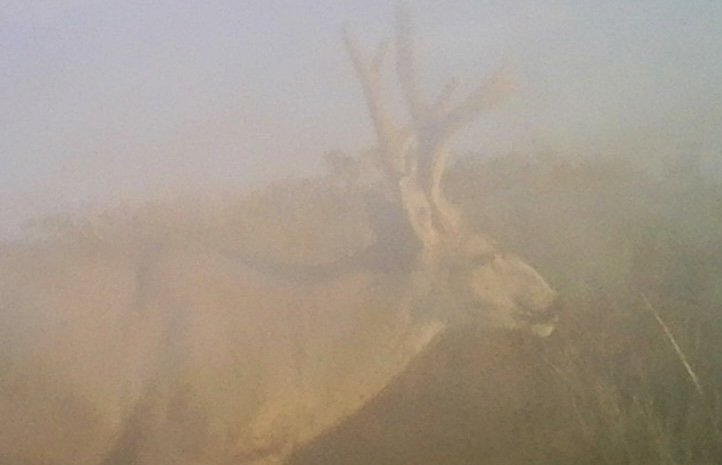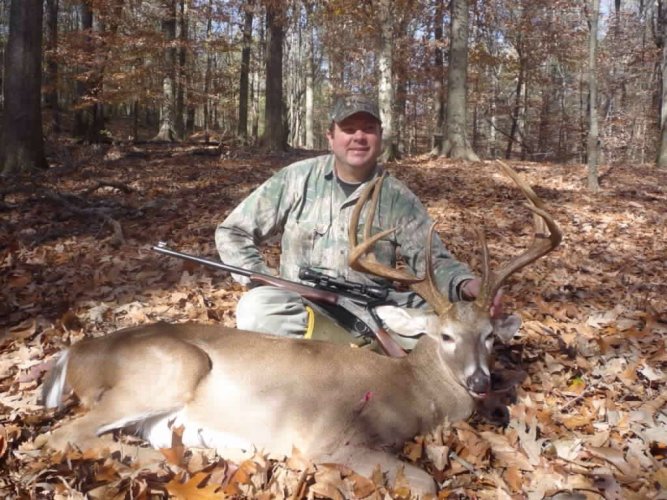Navigation
Install the app
How to install the app on iOS
Follow along with the video below to see how to install our site as a web app on your home screen.
Note: This feature may not be available in some browsers.
More options
You are using an out of date browser. It may not display this or other websites correctly.
You should upgrade or use an alternative browser.
You should upgrade or use an alternative browser.
How Old Was that Animal?
- Thread starter Big Fin
- Start date
antlerradar
Well-known member
I think that comparing high fence and wild animals is apples and oranges. I have found that while deer often are at or at least 90% of peak at 6 /12 year of age, there is no real down hill until near the end of life. Often it is at age 8+ is when deer are at there best. My best guess as to why it is that a buck at this older age are no longer the dominate buck in the herd and the lack of rut stress translates into better antlers. My buck is a good example, and so are some of the other bucks I posted in this tread.I took two things away from my fishing and dove hunting on the high fence property. 1) Even deer who have the easy life and eat fantastic feed USUALLY peak AROUND 5.5-6.5. There will be occasional outliers in any population and when examining any trait, but we should not base management on outliers. 2) High fence hunting is not the same as hunting on low fence, and the deer are not the same deer.
Last edited:
sclancy27
Well-known member
- Joined
- Nov 23, 2022
- Messages
- 852
My best guess is he got hung up in the top 2 wires of a fence with his rear legs while jumping it. You see ALOT of animals (deer, elk, I've even seen antelope). Somehow got free after mulching his legs, yuck.Wy G&F lab aged him at 13 1/2. Not sure what was the cause of the rear leg wounds, but I'm sure I did him a favor.
View attachment 260520View attachment 260521
rogerthat
Well-known member
- Joined
- Aug 29, 2015
- Messages
- 3,391
This has been my experience as well. We have shot several 7.5 year old whitetails with the biggest set of antlers they had ever grown. These were Montana deer also.I think that comparing high fence and wild animals is apples and oranges. I have found that while deer often are at or at least 90% of peak at 6 /12 year of age, there is no real down hill until near the end of life. Often it is at age 8+ is when deer are at there best. My best guess as to why is that buck at this older age are no longer the dominate buck in the herd and the lack of rut stress translates into better antlers. My buck is a good example, and so are some of the other bucks I posted in this tread.
antlerradar
Well-known member
Rut stress or lack there of may be why game farm deer peak earlier in life. I am not that familiar with game farms, but I doubt the bucks are chasing does at dead run for any great distance or having a knock down drag out fight with other bucks.My best guess as to why is that a buck at this older age are no longer the dominate buck in the herd and the lack of rut stress translates into better antlers. My buck is a good example, and so are some of the other bucks I posted in this tread.
Djfan
Well-known member
I took a mulie buck two years ago that was so old the velvet never came off his antlers. didn't taste too good.
ImBillT
Well-known member
- Joined
- Oct 29, 2018
- Messages
- 3,986
I don’t think high fence is going to drastically change when an animal peaks or declines. I do think that high fence and ear tags keeps people from making mistakes about which deer is which. There will always be outliers. Some deer will peak later. But there’s a reason that a lot of game and fish agencies across the country say that whitetails peak AROUND 5.5-6.5.
I’m not 100% sure that the deer you killed dropped those sheds. Very nice buck with some definite similarities to the sheds. Could be the same deer. I’m not saying he isn’t.
Do you think this deer is declining, or just reaching his peak? These pics are from two different years. Yea it’s a mule deer, and they will peak later than your average whitetail.
I’m not 100% sure that the deer you killed dropped those sheds. Very nice buck with some definite similarities to the sheds. Could be the same deer. I’m not saying he isn’t.
Do you think this deer is declining, or just reaching his peak? These pics are from two different years. Yea it’s a mule deer, and they will peak later than your average whitetail.
Attachments
ImBillT
Well-known member
- Joined
- Oct 29, 2018
- Messages
- 3,986
Can you prove that game farm deer peak earlier? While they may not chase does very far, they have knock down drag out fights. The one I fished on was culling their typicals because they were killing so many bucks. The non-typicals weren’t as effective at stabbing each other to death.Rut stress or lack there of may be why game farm deer peak earlier in life. I am not that familiar with game farms, but I doubt the bucks are chasing does at dead run for any great distance or having a knock down drag out fight with other bucks.
You seem to be taking it as a given that game farm deer of known age peak earlier than wild deer of unknown age, without even having a definite mechanism for why that might be.
Last edited:
ImBillT
Well-known member
- Joined
- Oct 29, 2018
- Messages
- 3,986
A lot of the deer in the thread are mule deer which most likely peak later than whitetails.I think that comparing high fence and wild animals is apples and oranges. I have found that while deer often are at or at least 90% of peak at 6 /12 year of age, there is no real down hill until near the end of life. Often it is at age 8+ is when deer are at there best. My best guess as to why is that a buck at this older age are no longer the dominate buck in the herd and the lack of rut stress translates into better antlers. My buck is a good example, and so are some of the other bucks I posted in this tread.
There is a big difference between saying “most whitetails peak around 5.5-6.5” and saying “no whitetail ever, anywhere, could possibly, peak at an age older than 6.5”.
I’m sure there is regional variability, and I’m sure there are deer that peak later and live longer than the average in all areas. I wouldn’t be remotely surprised to find that say 20%(although my GUESS would be a much lower %)of whitetail deer peak at 7.5, and maybe 1-2% at 8.5. That would not invalidate the assertion that most peak at 5.5-6.5. It would also not be justification for trying to get all your whitetails to 7.5 before shooting them. Plenty of people love well over 100yrs. Plenty die, essentially of old age or age related problems, right around 70.
Last edited:
antlerradar
Well-known member
Impossible to tell if a deer has peaked with only two years to go on.I don’t think high fence is going to drastically change when an animal peaks or declines. I do think that high fence and ear tags keeps people from making mistakes about which deer is which. There will always be outliers. Some deer will peak later. But there’s a reason that a lot of game and fish agencies across the country say that whitetails peak AROUND 5.5-6.5.
I’m not 100% sure that the deer you killed dropped those sheds. Very nice buck with some definite similarities to the sheds. Could be the same deer. I’m not saying he isn’t.
Do you think this deer is declining, or just reaching his peak? These pics are from two different years. Yea it’s a mule deer, and they will peak later than your average whitetail.
antlerradar
Well-known member
I have little experience with game farms. I take you at your word that those deer peak around age 6. I just don't see this in the wild so I am just speculating as to the reason why.You seem to be taking it as a given that game farm deer of known age peak earlier than wild deer of unknown age, without even having a definite mechanism for why that might be.
antlerradar
Well-known member
I have seen similar studies. The data is based on a single year of a deer's life, (year they were shot). If you take the age of those deer, measure the size of the antlers and plot the data on a graph, you will likely get a peak at 4 or 5 years of age. You could interpret this as deer peaking in antler growth. This would be drawing a false conclusion. What this data is most likely showing is that bucks with the potential to grow large antlers die young and bucks with poor potential live longer.Weird!! fwp shared a study with me that bucks don’t get any bigger once they hit 4 years old. That must have been an outlier.
Last edited:
ImBillT
Well-known member
- Joined
- Oct 29, 2018
- Messages
- 3,986
To the best of my memory TPWD has published many things saying our whitetails peak between 5.5 and 6.5 and did so before I ever set foot on a high fence operation. What I took away from seeing that high fence operation was that EVEN WITH foodplots, protein feeders and selective breeding, the deer were still peaking at similar ages.I have little experience with game farms. I take you at your word that those deer peak around age 6. I just don't see this in the wild so I am just speculating as to the reason why.
If you have data that game farm deer peak earlier than wild deer put it forward. I don’t have data saying one way or the other, and my memory could be wrong about when TPWD says whitetails peak. I haven’t really cared about hunting whitetails in almost a decade. That said, I really feel like I’ve encountered 5.5-6.5 for whitetails from a number of different sources over the years.
Neither for the wild, nor high fence, would most whitetails peaking at 5.5-6.5 mean that none peaked at 7.5 or 8.5. All creatures have different lifespans across individuals.
ImBillT
Well-known member
- Joined
- Oct 29, 2018
- Messages
- 3,986
TPWD did some pretty long studies capturing low fence deer from helicopters, measure antlers, ear tagging, and releasing. I don’t remember what they got in terms of age to peak(but I bet it was around 6.5). What I do remember was that over 80% of the spikes produced smaller antlers at their peak year than their fork antlered peers. These deer weren’t considered peaked when shot. They were ear tagged deer(from helicopter capture) that had documented peaks and declines. I’ll see if I can find the study. The point is, not every conclusion of a deer’s peak age assumes that he peaked when he got shot.I have seen similar studies. The data is based on a single year of a deer's life, (year they were shot). If you take the age of a deer, measure the size of the antlers and plot the data on a graph, you will likely get a peak at 4 or 5 years of age. You could interpret this as deer peaking in antler growth. This would be drawing a false conclusion. What this data is most likely showing is that bucks with the potential to grow large antlers die young and bucks with poor potential live longer.
ImBillT
Well-known member
- Joined
- Oct 29, 2018
- Messages
- 3,986
Well, let’s put it another way. How old is he?Impossible to tell if a deer has peaked with only two years to go on.
Most of the 2.5 and 3.5 year old bucks on that place have bigger antlers.
Attachments
antlerradar
Well-known member
Looking at that nose, I would say he is old. I would also bet he was never much for antlers. Tough to guess age from a few pictures, I like to have a few years of history before I start to estimate age.Well, let’s put it another way. How old is he?
Most of the 2.5 and 3.5 year old bucks on that place have bigger antlers.
I don't have the data you are looking for, I base my thoughts on the dozens of whitetail deer I have watched grow old. Almost all of them grew their best set of antlers past the age of 5 or 6. I found the sheds from most of those deer. In this thread I have posted examples of three. All three are at least 8 years old and all three grew the best set the last year of there life. Some of the dozens grew antlers in the 160+ others never topped 100. Often there was a peak at age five or 6, but just as often those deer recovered and grew even bigger antlers later in life. The two dead head I posted in this tread are good examples of this. ( just noticed that I misplaced the antlers in the picture of the antlers in a row. The second and third set should be swapped.)To the best of my memory TPWD has published many things saying our whitetails peak between 5.5 and 6.5 and did so before I ever set foot on a high fence operation. What I took away from seeing that high fence operation was that EVEN WITH foodplots, protein feeders and selective breeding, the deer were still peaking at similar ages.
If you have data that game farm deer peak earlier than wild deer put it forward. I don’t have data saying one way or the other, and my memory could be wrong about when TPWD says whitetails peak. I haven’t really cared about hunting whitetails in almost a decade. That said, I really feel like I’ve encountered 5.5-6.5 for whitetails from a number of different sources over the years.
Neither for the wild, nor high fence, would most whitetails peaking at 5.5-6.5 mean that none peaked at 7.5 or 8.5. All creatures have different lifespans across individuals.
Last edited:
3855WIN
Well-known member
Sandy soil makes a difference.I'm guessing this has something to do with wintertime Temps? Seems like you guys mentioned that on your podcast with Randy
3855WIN
Well-known member
rogerthat
Well-known member
- Joined
- Aug 29, 2015
- Messages
- 3,391
The bucks I have been fortunate to follow through their lives really never peaked. They grew incrementally every year until they basically die. Maybe the last year of their life they may go down hill but largely in my experience antler “peaking” is a myth.TPWD did some pretty long studies capturing low fence deer from helicopters, measure antlers, ear tagging, and releasing. I don’t remember what they got in terms of age to peak(but I bet it was around 6.5). What I do remember was that over 80% of the spikes produced smaller antlers at their peak year than their fork antlered peers. These deer weren’t considered peaked when shot. They were ear tagged deer(from helicopter capture) that had documented peaks and declines. I’ll see if I can find the study. The point is, not every conclusion of a deer’s peak age assumes that he peaked when he got shot.
ImBillT
Well-known member
- Joined
- Oct 29, 2018
- Messages
- 3,986
I’m not convinced you’re seeing the same deer. Maybe you are. Deer without ear tags are easily misidentified. Deer that are ear tagged peak and decline. Poor nutrition years can cause a nutrition based decline and an apparent recovery in a year with better nutrition, but that’s not an effect of age.The bucks I have been fortunate to follow through their lives really never peaked. They grew incrementally every year until they basically die. Maybe the last year of their life they may go down hill but largely in my experience antler “peaking” is a myth.
Last edited:
Similar threads
- Replies
- 230
- Views
- 18K



